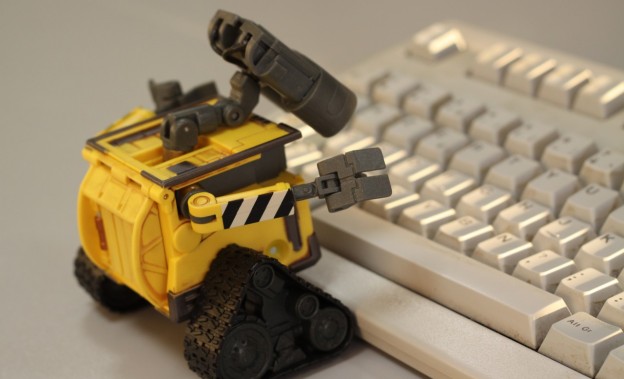The following opinion piece is a guest post and does not necessarily reflect the opinions of this publication. Read more about MediaShift guest posts here.
As the Head of Communications at Automated Insights, the company whose “robot writer” turns raw data into human-sounding prose, a big part of my job is reassuring journalists that we’re not coming after theirs. In fact, we’re not aware of a single job that our technology has displaced.
But even though we don’t take jobs, our technology is part of the broader automation trend reshaping the nature and scope of human work. Every week, it seems, robots and algorithms disprove once again that “only humans can do x” — whether x is driving a car, understanding a photograph, or writing a story.
It’s happening fast — five years ago, few media companies believed algorithms could produce human-sounding news. Today, the Associated Press is embracing such technology and expanding its use. In five more years, media companies who don’t leverage automation might be viewed as hopelessly outdated. And media employees who don’t understand how to leverage automation may need to update their skills.
While no one really knows what the future of holds for workers, it doesn’t take much foresight to grasp an essential truth about work: no matter your industry, the future won’t look like the past. Approaching the job market with traditional assumptions about your professional value is career malpractice.
Mapping a Path Filled with Bots

Photo by Sharon Terry and used here with Creative Commons license.
Here, from our place at the frontlines of automation, is our best advice for those mapping a career path through our rapidly changing economy:
1) Any task that feels robotic can be replaced by an actual robot (or software).
And sooner than you might think. This is great news for workers who have better things to do, like reporters freed up to do more investigative reporting. This is less exciting for workers whose entire job consists of robotic tasks. So don’t get a job doing rote data processing if you’re looking for a long-term career.
2) People are still more creative than algorithms.
Original thinking, contextual understanding, and one-off creative tasks (like, for instance, writing this article) are hard to automate. Jobs requiring those skills will probably stick around for a while.
As a rule of thumb, the more human your job feels, the safer it is. Don’t hold on to that rule too tightly, though — “feeling human” isn’t a very scientific measurement, and algorithmic abilities can sneak up and surprise you if you’re not paying attention.
3) Humans still need to build and program all of these automated systems.
Venture capitalist Marc Andreessen says, “software is eating the world,” and that makes it a growth industry for the foreseeable future. The abilities of a software platform ultimately rest with the creative humans who build, maintain, and configure it.
4) Don’t try to “beat” machines — learn to work with them.

Photo by kara brugman on Flickr and used here with Creative Commons license.
Our software platform recently raced NPR reporter Scott Horsley to write an earnings story about Denny’s. Our technology wrote faster, but Horsley’s story had breakfast jokes. So why not leverage both skill sets?
If Horsley let a computer program write the basic story and then added his jokes, the duo would produce an engaging human story at super-human speed. In fact, that’s essentially what happens in the AP newsroom, where human reporters add additional context to the stories that are generated automatically.
In Wall Street Journal, Tom Davenport writes that The Secret to Not Letting a Machine Steal Your Job is augmentation. “Individuals,” he says, “need to plan now for careers that don’t overlap too much with computers, but do complement them.”
5) Big companies can be big risks.
Job security in many of today’s large, established companies may be nothing more than an illusion, as such companies find it impossible to adapt to technological changes before it is too late. News of mass layoffs may become more commonplace as entire divisions become unnecessary.
Smaller, nimbler startups have risks of their own, of course. But at least they might offer a bigger upside.
6) Be an entrepreneur.
Our CEO Robbie Allen doesn’t have a college fund for his children — he has an after-high-school fund. After they graduate, he’ll give his kids a choice: they can either use the money to go to college or start a company.
After all, even businesses that are largely automated need someone to build and own them. According to a recent NPR report, Chief Executives have just a 1.5% chance of being automated.
Not everyone needs to start a company, of course. But amidst today’s technological tumult, developing an entrepreneurial mindset — one that seeks out new opportunities in changing times — may be the single best way to remain relevant.
James Kotecki is Head of Communications at Automated Insights. AutomatedInsights.com and follow @AInsights on Twitter.
A version of this article originally appeared on Medium.com.

